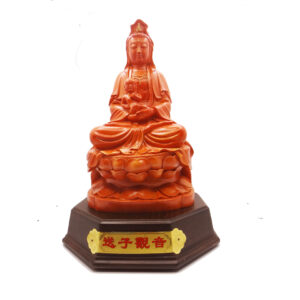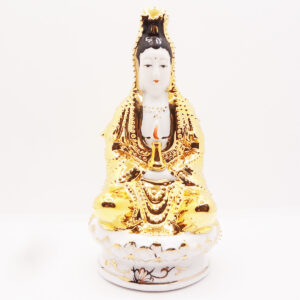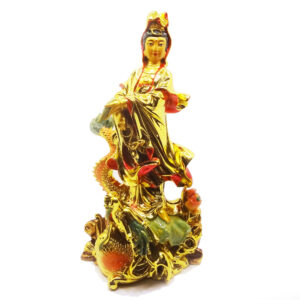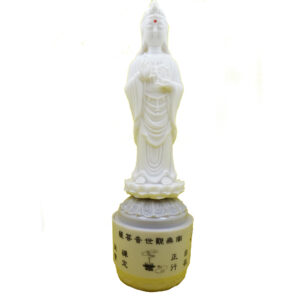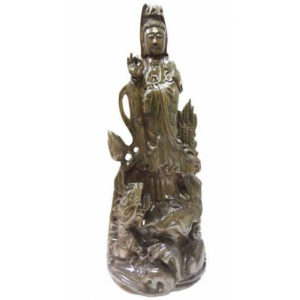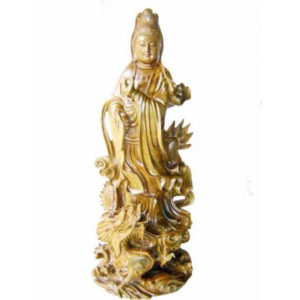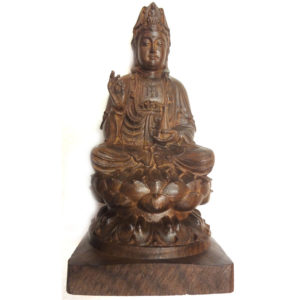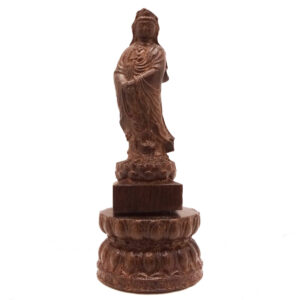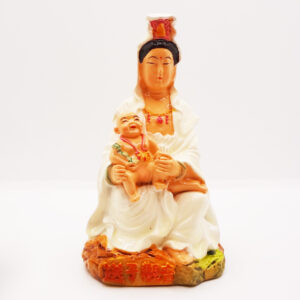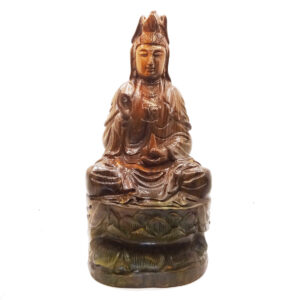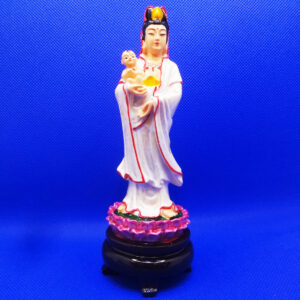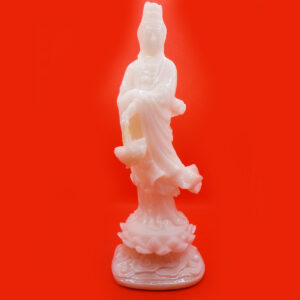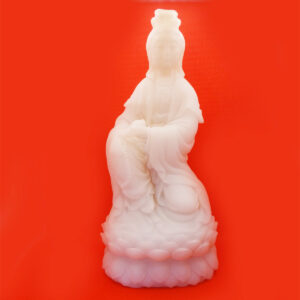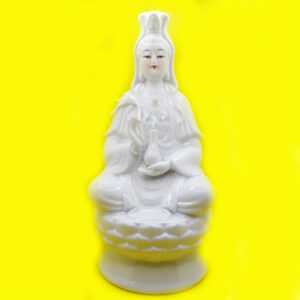Kuan Yin, also known as Guanyin or Quan Yin, is a prominent figure in Buddhist and Chinese spiritual traditions. She is often referred to as the Bodhisattva of Compassion, embodying the ideal of compassion and mercy.
In Buddhist belief, a bodhisattva is an enlightened being who has attained spiritual awakening or enlightenment but chooses to remain in the cycle of rebirth to assist all sentient beings in their quest for liberation. Kuan Yin is regarded as the epitome of compassion, offering solace and guidance to those who seek her help.
Kuan Yin is depicted in various forms and poses, but she is commonly portrayed as a female figure with a gentle and serene expression, often shown holding a vase containing the “water of compassion” or a willow branch, which represents healing and forgiveness. She is considered to have the ability to hear the cries and pleas of suffering beings and responds to them with love and compassion.
Kuan Yin’s origins can be traced back to Avalokiteshvara, a bodhisattva in Mahayana Buddhism. As Buddhism spread to China, Avalokiteshvara underwent a transformation and became known as Kuan Yin, assimilating with local beliefs and cultural expressions.
The worship of Kuan Yin is widespread in East Asia, particularly in China, Taiwan, and other countries influenced by Chinese culture. Devotees often pray to Kuan Yin for protection, guidance, and assistance in times of difficulty. She is seen as a source of inspiration and a symbol of unconditional compassion and kindness.
It’s important to note that Kuan Yin is not considered a deity to be worshipped in the same way as a god, but rather as a spiritual guide and compassionate presence. Her teachings and attributes serve as an inspiration for followers to cultivate compassion and alleviate suffering in themselves and others.
Showing all 15 results

